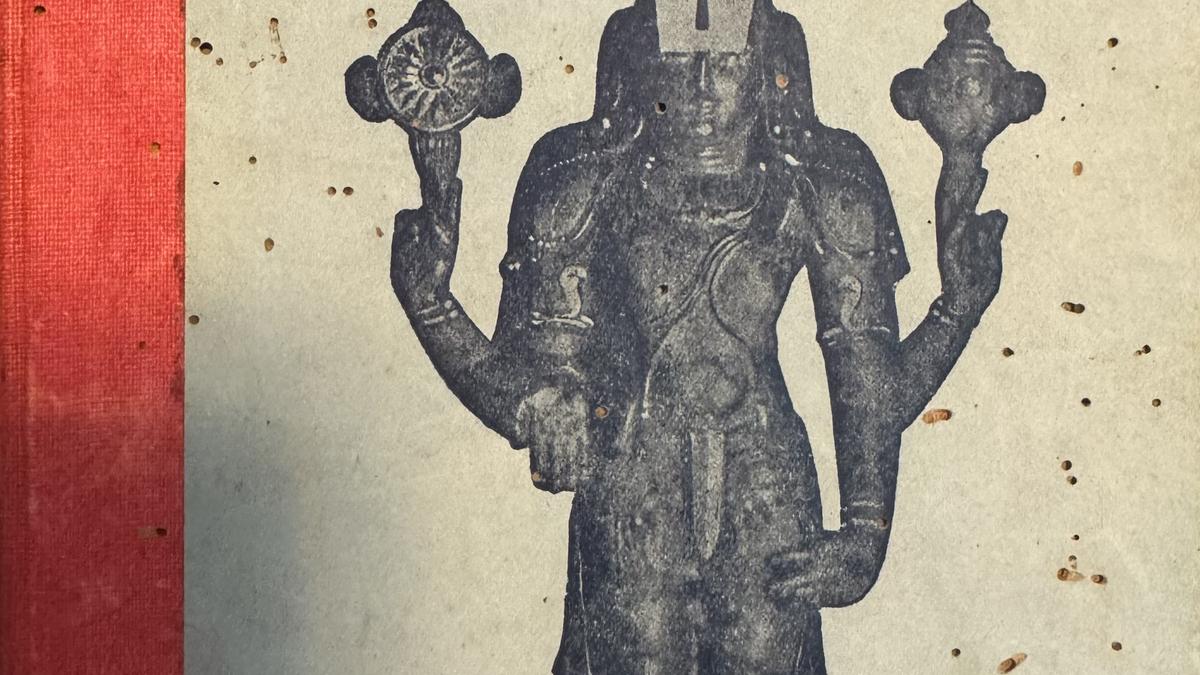
Tirumala-Madras link at a time of controversy
The Hindu
Discover the fascinating history of Tirupati Sri Venkatesvara Balaji temple in Madras through a detailed book by V.N. Srinivasa Rao.
Blame it on the recent laddu controversy — ever since it broke, I have been engrossed in a book, titled Tirupati Sri Venkatesvara Balaji, Origin, Significance & History of the Shrine. Written by V.N. Srinivasa Rao, Tahsildar, Chittoor District and former Assistant Commissioner, Hindu Religious Endowments, it was published in 1948. What fascinated me most was the various connections it established between Madras city and the shrine. If the laddu controversy had broken out a century ago, we would have been deeply involved in it. The book is very much a Madras production. The author was a resident. The work was published by Umadevan & Co, Madras, and printed at the famed Jupiter Press, Sembudoss Street. The foreword was by N. Chandrashekara Aiyar, former Judge of the High Court of Madras. The stunning photos, sadly all in small format, of Tirumala in the 1940s, were taken by the proprietor of Luz Studios.
The book goes into great detail in describing the daily, weekly and annual rituals and practices at the temple, apart from tracing its history from the beginnings of the Common Era. In 1639, when the British arrived here, the temple and our city had the same overlord – the Raya of Chandragiri. Both came under the control of the Golconda rulers in the 1670s. When Aurangzeb conquered Golconda in 1686, Madras and Tirumala came under their administrators, the Nawabs of Arcot. In 1750, Nawab Mohammad Ali Wallajah assigned the revenues from the temple to the Madras government.
In the early years this was more a burden than a source of income. In 1753 and 1757, brothers of the Nawab mounted attacks on Tirumala and contingents from Madras had to be despatched to protect the temple. September/October, when the Purattasi festival was held, became a favourite time to invade and Company forces had to be on full alert. In 1759, it was the Mahrattas who attacked, and a bloody battle ensued. The English were successful but could do nothing between 1782 and 1784 when Hyder Ali was the ruler. The Nawab again gave Tirumala to the English in 1792 and thereafter it was Company rule — first as renters and then, from 1801, as administrators.
Collectors appointed by Madras to Chittoor interested themselves in the temple and the conduct of its rituals. George Stratton (whose Dubash was ‘Stratton’ and not ‘Strotten’ Muthiah Mudali after whom there is a street in George Town) and HS Graeme (after whom we have Graeme’s and not Gream’s Road) were but two of the many who officiated. There is a Graemespet in Chittoor even now. It was Stratton who in 1803 first comprehensively documented the temple history in English, from answers to a questionnaire he sent the hereditary trustees. This is known as the Sawal-e-Jawab account and is accepted by courts as the primary reference even now.
In 1841, the Company decided to withdraw from temple management all over India. In North Arcot, it handed over 188 temples to local trustees, but held on to Tirumala alone, for while all other temples together accounted for ₹32,000, Tirumala alone had annual revenue of ₹1 lakh! A year later, the temple was handed over to the Mahant of the Hathiramji Mutt, not without protests by the local Vaishnavite pontiff. Thereafter, the Tirumala temple was subject to numerous lawsuits in the High Court of Madras, and it was in 1933 that the government took over once again, with the Tirumala Tirupati Devasthanam Act. In 1957, four years after the formation of Andhra, Tirumala was assigned to the new State and the rest is history.
(V. Sriram is a writer and historian.)

The girl, who was admitted to Aster CMI Hospital with alarming breathlessness and significant pallor, was diagnosed with Wegener’s Granulomatosis (now known as Granulomatosis with Polyangiitis or GPA), a rare autoimmune condition that causes spontaneous bleeding in the lungs, leading to acute respiratory failure.

ACB files case against IPS officer N. Sanjay in Andhra Pradesh. The official is accused of manipulating the tender processes for awarding contract for development and maintenance of AGNI-NOC portal, and conducting awareness meetings for SC/STs. It is alleged that the total value of properties stolen, or involved in the case is estimated at ₹1,75,86,600.









